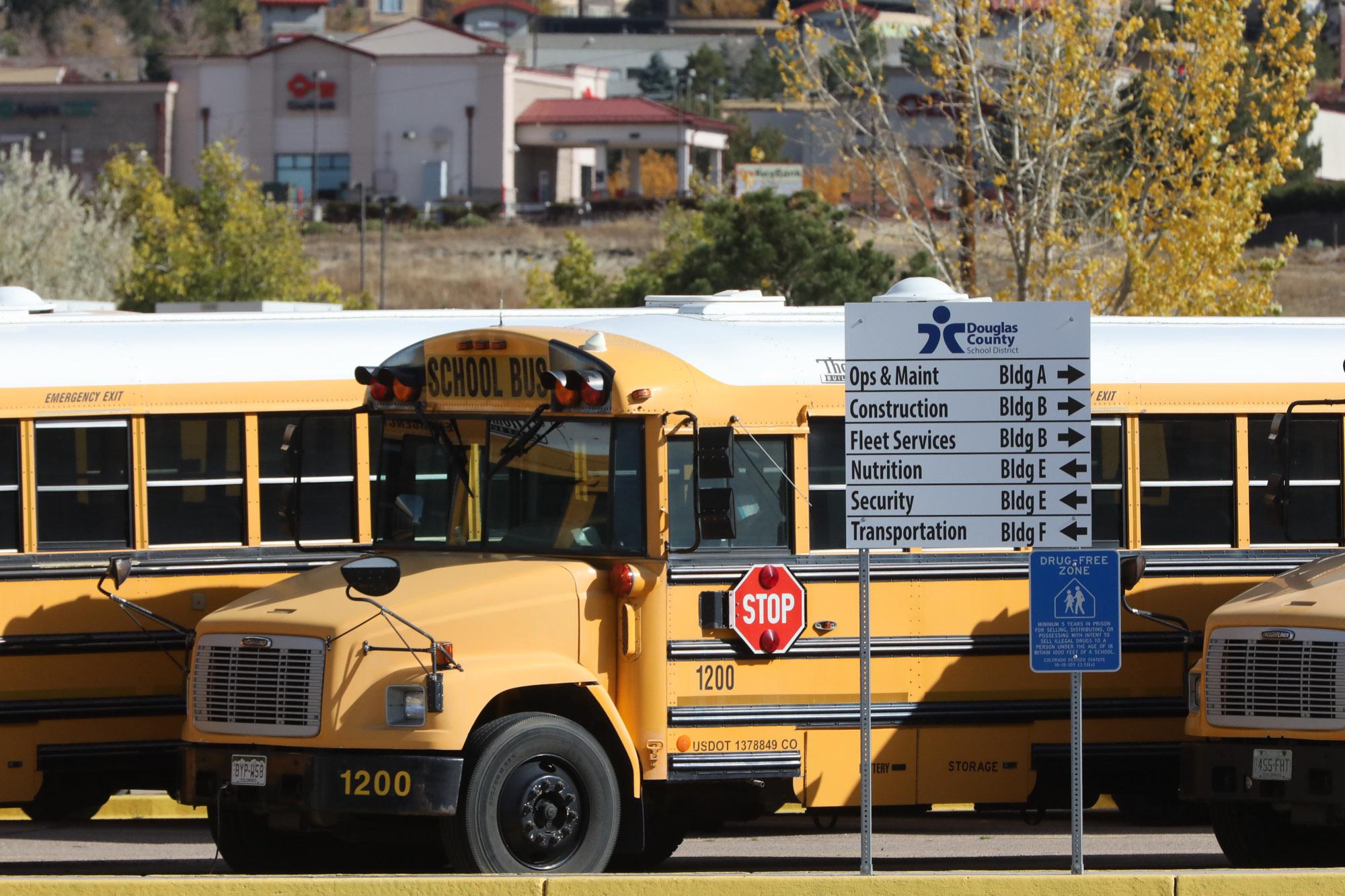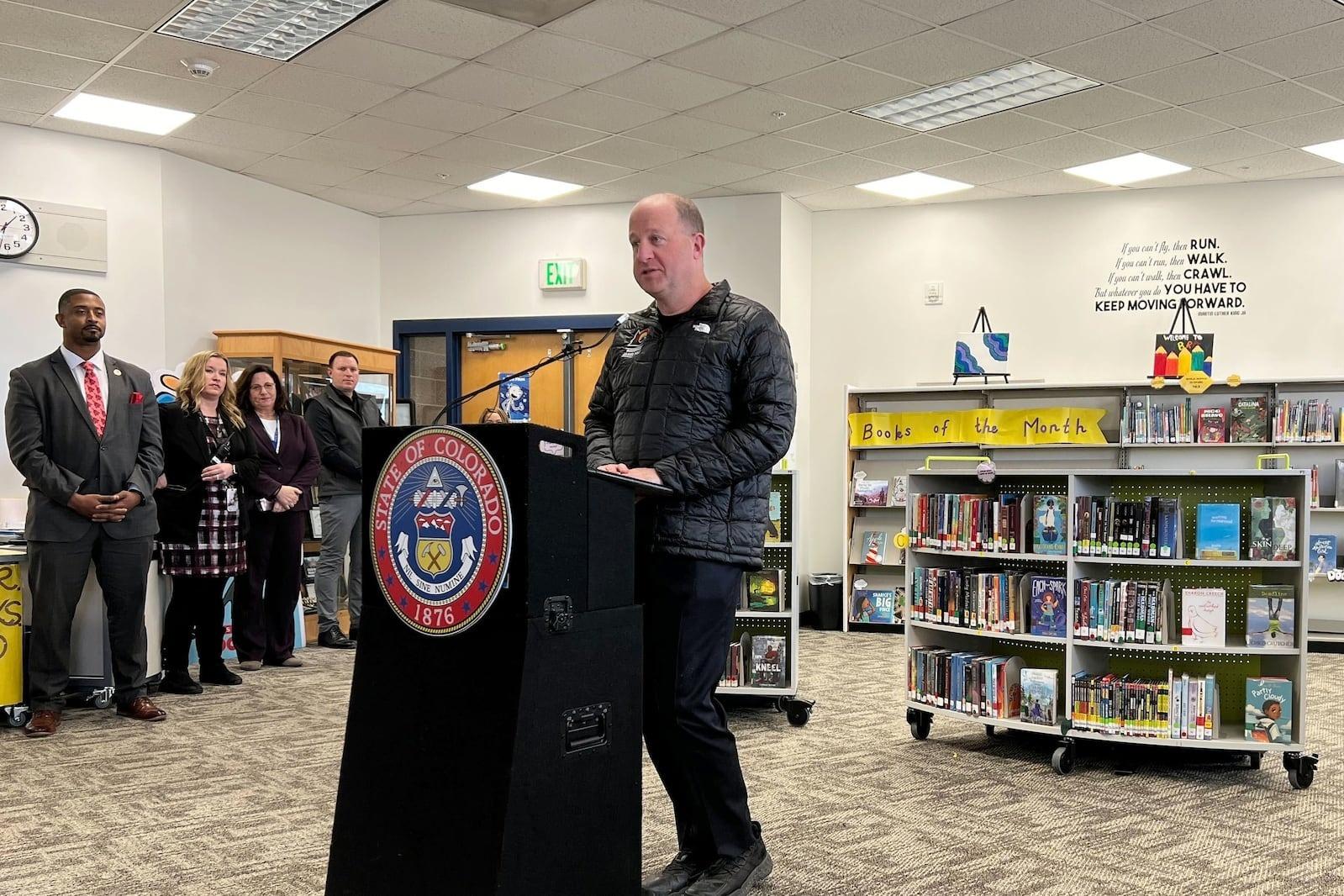
Inadequate funding, a growing educator shortage, and educator burnout have created a crisis in Colorado’s schools. That’s according to a new “State of Education Colorado” report released Tuesday by the Colorado Education Association, the state’s largest teacher’s union. The report painted a bleak and unsustainable picture of the state’s public schools as they struggle with multiple challenges after months of COVID-related disruptions, social isolation, and teachers “fleeing the profession.”
“Colorado's public education system is in crisis,” said Michael Maes, president of the Pueblo Education Association, "Our students don't deserve this."
Colorado is near the bottom of per-pupil funding and teacher pay among states. Over the past decade, public schools have received $10 billion dollars less than they were owed as lawmakers tried to balance the state budget. And the long-term funding shortfall is fueling an educator shortage.
“We need systemic change to the way that we fund our schools,” said Amie Baca-Oehlert, high school counselor and president of the Colorado Education Association. “Year after year we do Band-Aids on a gushing wound.”
Exponentially increasing workloads and “bitter political vitriol over health, safety and history curriculum” are causing intense educator burnout, according to Baca-Oehlert. More than half of educators in a recent survey of union members this school year said burnout is significantly or somewhat worse than last year.
And as more educators leave mid-year, districts are struggling to replace them. Approximately 3,300 school positions are open statewide. More than two-thirds of union members are considering leaving the profession entirely in the near future. That’s up from 40 percent last year at the height of the pandemic.
“That's an indicator of the stress and the pressures that our educators are feeling,” said Baca-Oehlert, “The reason why this is so concerning is because we know that stability, consistency and relationships matter for student learning. When we have that churn people leaving the profession, it greatly impacts our students.”
The report also highlights the CEA’s legislative priorities for the term. Those included restoring school funding, shoring up educator retirement funds, and keeping a pause on grading schools based on test scores until the crisis is over.
The “debt” owed to schools is referred to as the budget stabilization factor. So far, that debt totals $10 billion over the past ten years.
More teachers are quitting because of burnout and political fights targeting educators
“In my 22 years in DPS, I have never seen the district have such a difficult time filling positions and keeping schools functioning, ultimately leading to further stress on students and educators,” said Denver Public Schools high school English teacher Amber Wilson.
She said some large schools have had as many as 10 to 15 teachers resign, while some smaller elementary schools have lost four or more. Wilson said it’s not unusual at this time of year for local union offices to field calls from teachers wanting to quit. But this year, the call volume is 10 times higher. As of Tuesday morning, she said DPS had 263 teacher, paraprofessional, counselor, and other support professional positions open.
When a teacher leaves a high school, the remaining teachers are often asked to cover classes during their planning periods because of the additional substitute teacher shortage. In elementary schools, sometimes classes are combined, which results in larger class sizes. In addition, classroom aides who provide support are being asked to cover whole classes, along with math and reading interventionists.
“So, the interventions are not being provided due to these shortages,” said Wilson, adding that the crisis is only exacerbating learning gaps created by the pandemic.
Wilson said teachers at the five, six, or seven-year mark in their careers are approaching her saying, “I can't sustain it. I can't do it. It's not supposed to take my whole life. It's not supposed to be everything that I do and I have nothing left when I go home to give my family.”
John Robinson, president of the Poudre Education Association, said he had three meetings Tuesday afternoon with educators, trying to “get them through the end of the school year and see that light at the end of the tunnel.”
Nearly 90 percent of Jefferson County School District educators said in a recent union survey that stress was high or higher than previous years and 70 percent said that their workload was unsustainable.
“Many educators are showing strong signs of trauma as well,” said Brooke Williams, president of the Jefferson County Education Association. “We believe addressing this is urgent.”
Adding to teacher stress is the persistent knowledge that students are not getting the learning and emotional support they deserve and need in the current system.
Students social and emotional needs are at an all-time high but schools struggle to hire support staff who serve those needs
Teachers this year report there are many more students with higher behavioral needs, but there’s not enough support staff to help them. John Robinson said 58 percent of support staff in his district earn well below a living wage.
“For a few dollars more, they can work in any big box retail store.”
Students are struggling with everything from grief over a parent who died during the pandemic, to the consequences of social isolation and untreated mental illness.
“Our students are hurting,” said high school teacher Amber Wilson. “There's not as much time because we're all stressed out, we're all burnt out. So it's hard to find that little extra bit that our students so, so, so desperately need right now.”
And covering for colleagues who have quit and making up for lost planning time has left teachers with less time to build relationships with students.
“We need real systemic changes that are going to provide relief to the workforce,” said Baca-Oehlert.
Educators say a lot can be done at the state, district and school level to alleviate teacher stress
Restoring school funding would allow salaries to match the experience and skills teachers possess, according to educators, making Colorado salaries competitive with other states. And they say, giving teachers the autonomy to do their jobs and focus on students by protecting their planning and reducing high-stakes testing would lower much of the stress.
They called on state lawmakers and district officials to take off some of the pressure regarding state standardized testing.
“Right now, that's not the pressure that the kids need,” Wilson said. “They already know that they've lost something and adding more stress onto these fragile kids is not going to make it better.”
Teachers say one consequence of covering for fewer and fewer instructors is a lack of prep time, which leads to poorer student outcomes. They are asking for more prep time, more prep days, an increase in substitute teacher pay to abate the stresses of the teacher shortage, and better pay for support staff.
“I think if we really work towards making these changes, we'll be able to attract and retain (teachers),” JCEA’s Brooke Williams said.









